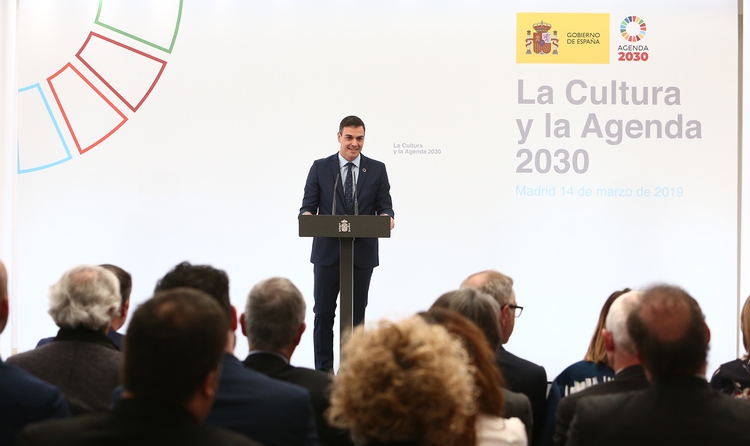The 2030 Agenda: What it is – and is not

“Global elites have a secret plan to institute a global dictatorship via the 2030 Agenda: …

“Global elites have a secret plan to institute a global dictatorship via the 2030 Agenda: a single government for the whole world that serves its own interests.” This is one of the conspiracy theories about the commitments adopted by the United Nations (UN) circulating not only on social media platforms, but even in the Spanish political sphere, where parties such as Vox warn that the 2030 Agenda is, in reality, a “globalist” plan that “is threatening our countryside, our industry and the progress of all Spaniards”.
Far from being a residual narrative, social media channels and profiles spreading unfounded rumours about the 2030 Agenda for Sustainable Development have seen increasing numbers of followers. Defenders of the theory claim that, behind such laudable objectives as “eradicating poverty” or “stamping out hunger”, there is a covert strategy in place to impose a New World Order dominated by “the ruling class”. According to this logic, the pandemic and subsequent vaccination campaigns were part of an operation to reduce the planet’s population and the fight against climate change was invented to diminish people’s liberties.
But this is not true – or new. The foundations of the New World Order conspiracy theory date back to the middle of the 20th century. Now it has been reinvented to focus its efforts on misinforming the public, generating confusion surrounding the 2030 Agenda and promoting the idea that it is a plan to restrict people’s liberties. One example of it is the distortion of the concept of the 15-minute city, an initiative that advocates for an urban planning model in which the basic needs of each person are located within a 15-minute walk in order to reduce traffic and pollution. It did not take long for the claim that “they want to imprison us in our neighbourhoods” to spread on social media.
But what exactly is the 2030 Agenda? How was it adopted? Who monitors its compliance? Is there any kind of secret interest behind this series of commitments?
The 2030 Agenda: a long history
We have to go back to the 1990s, a time when the UN organised and held a variety of international summits and conferences on human development, which gave rise to the famous eight Millennium Development Goals (MDG).
The MDG focused on issues such as eradicating poverty and, while progress was made on some of the goals, such as the measles vaccination, others related to job insecurity remained largely unchanged. In the meantime, the climate issue gained international importance and the UN considered it important to include it in its roadmap for sustainable development.
The result was the 2030 Agenda, which addressed both human development and environmental sustainability. These goals were decided on after numerous debates involving representatives of Member States, civil society, academics and business.
In the end, they ratified 169 targets grouped into 17 different overarching goals. The individual countries, however, are not required to meet these goals, since the SDGs are not legally binding. This also means that the level of commitment varies by country. However, individual countries may pass laws focused on achieving these targets, which could indirectly cause a target to be mandatory in a certain country.
The New World Order conspiracy theory
Interest in the 2030 Agenda has grown in recent years and, consequently, so has the amount of disinformation about it. One of the predominant narratives is the New World Order conspiracy theory. The term was actually coined in 1919 by former US president Woodrow Wilson in his negotiations for the Treaty of Versailles to describe the subsequent creation of a league of nations (the predecessor of today’s United Nations) that would to secure global peace after WWI. Today the use of this term has been distorted and for many people it has become synonymous with a conspiracy theory.